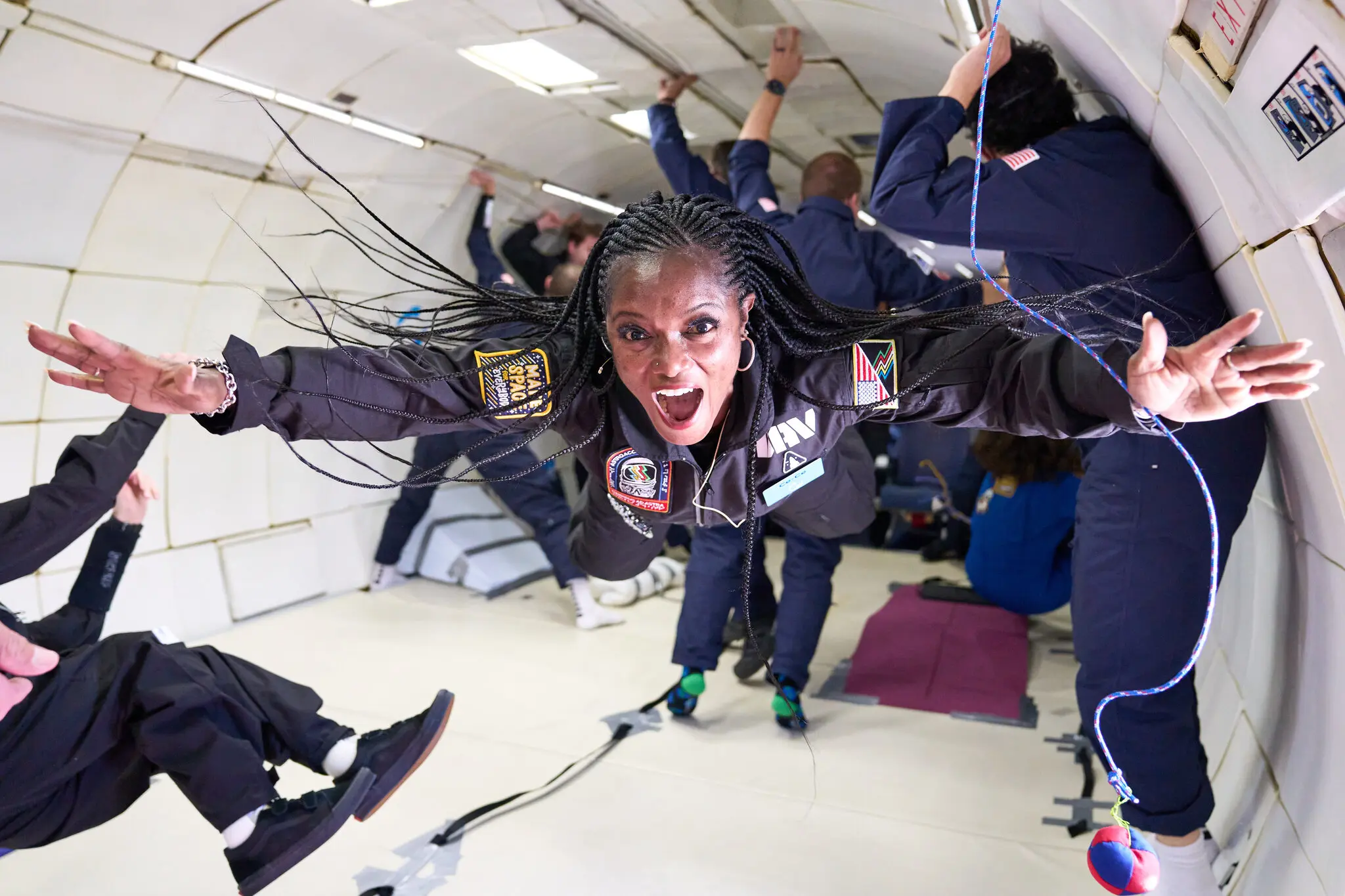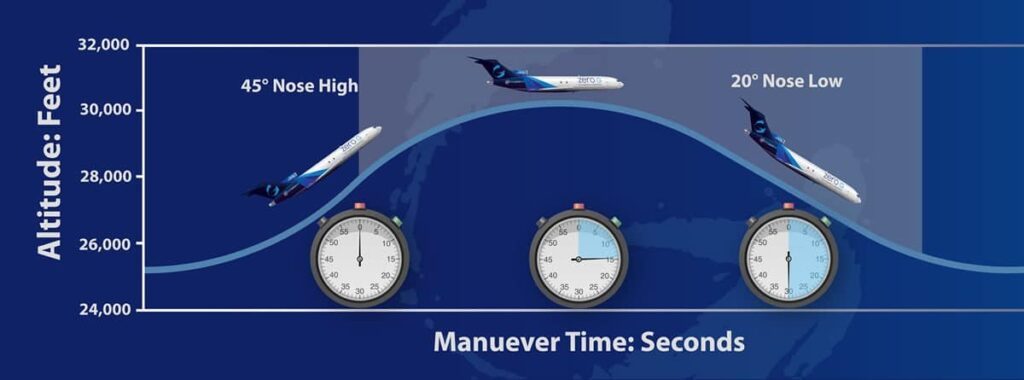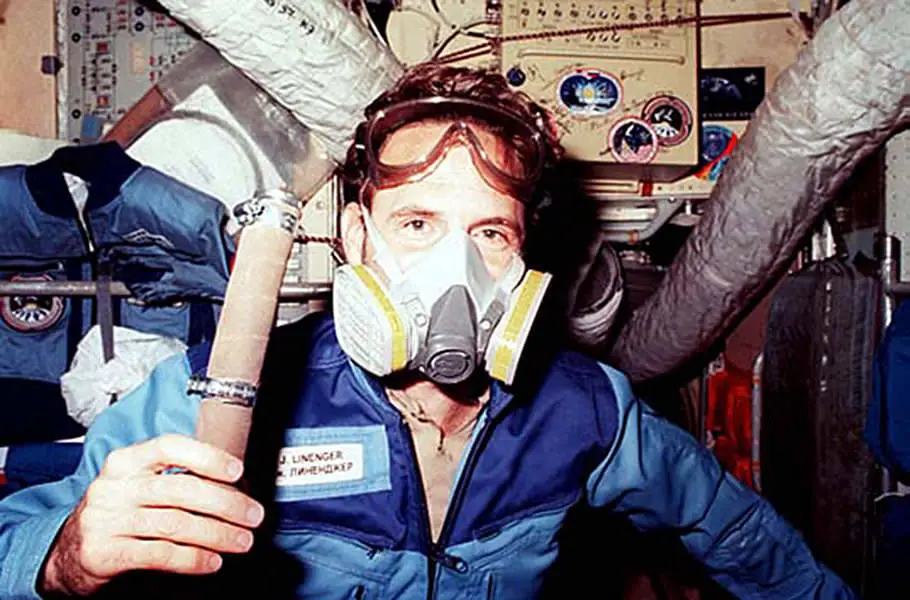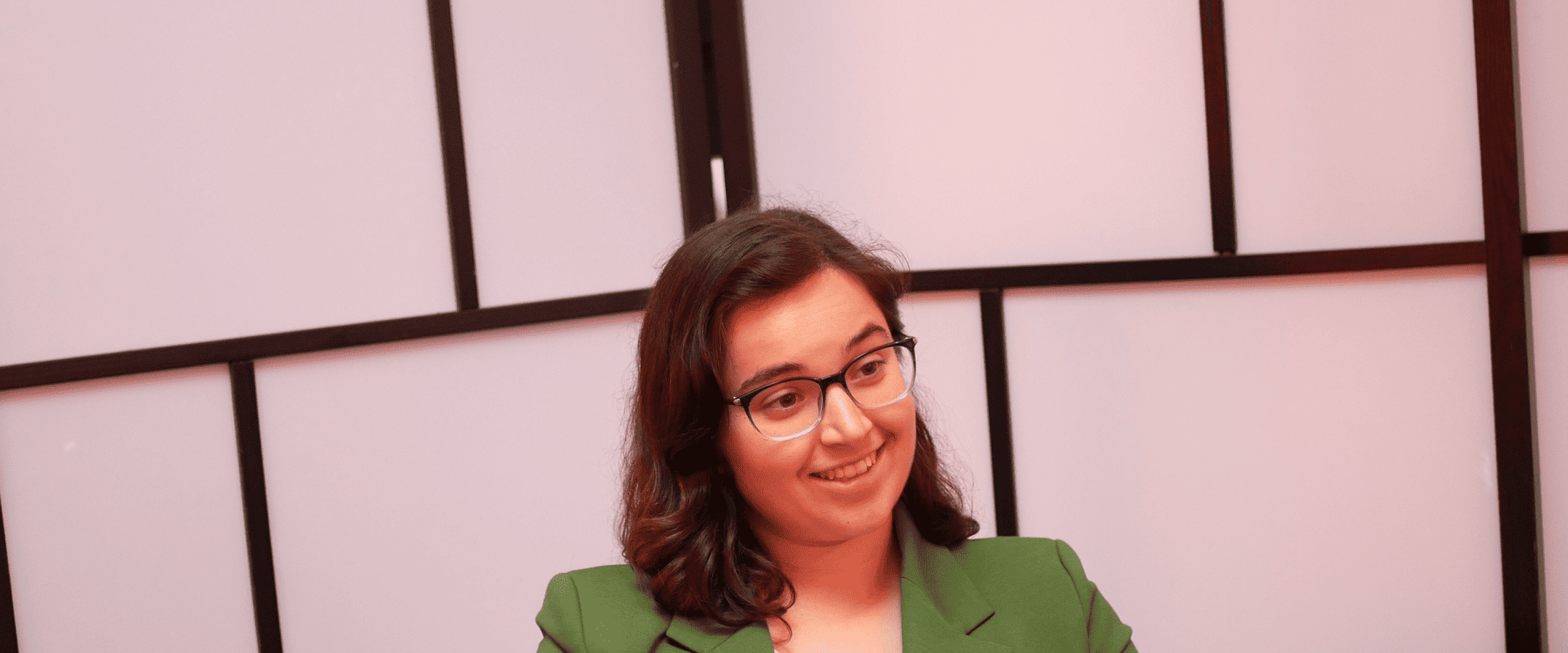
Becoming an astronaut has historically been one of the hardest careers to get into. To say you have to jump through some hoops is an understatement. The last time NASA opened up calls for applications, more than 12,000 tried their luck, but only the best 12 candidates got selected. But for a large fraction of the population, even applying remains a distant dream — for now.
About 16% of the world’s population (or 1 in 6 of us) live with a significant disability. Since Soviet cosmonaut Yuri Gagarin became the first person to go to space in 1961, disability has been a solid barrier to space travel.
But times are changing. AstroAccess, a non-profit organization on a mission to promote disability inclusion in space, has set itself the grand goal of breaking these barriers and sending the first disabled astronauts into space.
Inclusive space exploration
In 2021, AstroAccess took 12 people with disabilities on a zero-gravity parabolic flight, a surreal experience where they experienced weightlessness. The participants, or “ambassadors” as AstroAccess calls them, were split into three teams to perform experiments, each with a different objective. For instance, one group that involved people with varying degrees of sight impairment tested braille displays and tactile sensors.
Another group involved people with either a prosthesis or who need wheelchairs to move. The third group was made up of participants with varying degrees of deafness. These experiments showed that the ambassadors were capable of complying with safety features — such as returning to their designated seats — and even highlighted some of their strengths.
“A zero-gravity flight takes a normal airplane, just a regular commercial aircraft. All the seats are ripped out and there’s just padding everywhere. The airplane flies in repeated parabolas, which is why it’s called a parabolic flight. And at the top of each of those parabolas, you experience true weightlessness for about 30 seconds, and then you do it again and again. A typical flight will be anywhere from 15 to 30 parabolas, allowing multiple minutes of weightlessness or what we call microgravity,” AstroAccess founder Anna Voelker told ZME Science at the Falling Walls conference in Berlin.

The goals of these experiments are manifold. For one, this kind of research will help to guide space agencies to design better, safer spacecraft and space stations. But, most importantly, it’s all about showing that some people with certain disabilities can perform their astronaut duties just as well as their non-disabled counterparts.
- The Blind Crew tested tactile graphics for cabin walls to allow both blind crew members and sighted crew members to stay oriented during emergencies and find emergency gear.
- The Blind and Mobility Crews showed that a disabled person can independently get into a launch seat and safely fasten the five-point seat harness.
- The Hard-of-Hearing and Blind Crews demonstrated a system to enable improved speech understanding using Sony headphones and SonicCloud’s software that tailors audio to their hearing ability.
- The Deaf crew continued their work on linguistics studies of intelligibility of American Sign Language (ASL) in zero gravity, following research on another parabolic flight and a scuba diving experiment.
Voelker graduated from Ohio State University with a major in science communication and accessibility and a minor in astronomy and astrophysics. They’re one of those special people whose enthusiasm is simply contagious. When Voelker talks about improving access to space travel, their eyes light up like the stars in the night sky. I guess you need to manifest that energy in the world when you set out to disrupt how a huge industry such as spaceflight operates. And as one might imagine, it’s no easy task.
Shifting the paradigm of what an astronaut looks like
Astronauts are selected from among the most talented and qualified applicants. That’s understandable and it’s fairly obvious why — critical mission objectives hinge on their ability to perform their tasks successfully and safely. However, there are also hard barriers that disqualify otherwise worthy candidates just because they have a disability here on Earth. And some of these disabilities are not nearly as critical as some people in charge of space programs make them out to be.
“When you have statistics showing at least 16 percent of the world has a disability, it’s not acceptable to just exclude massive swaths of the global population when it comes to space travel. We can’t allow that. But also, I think a big misconception that we’re debunking is this idea that it’s too dangerous and it’s unsafe,” said Voelker.
“Really, when we think about accessibility, what we’re talking about is universal design, and that means designing for the widest audience possible. At the end of the day, universal design is redundant design. And what I mean by that, in the space industry, we always want a backup if a system fails. So, if we have accessible design in place, all of a sudden, we have just safer and more effective designs for astronauts with and without disabilities.”
On February 24, 1997, an astronaut’s worst nightmare happened. Fire had erupted aboard the Russian space station Mir due to a malfunction in the oxygen generation system. The fire cut off access to one of the two Soyuz escape vehicles but also filled the space station with blinding smoke.
“The fire was so enormous and the smoke and vapor coming off this fire site was such that we couldn’t see at arm’s length — and I could not at that time have imagined that we go on with the mission,” recalls European Space Agency (ESA) astronaut Reinhold Ewal, one of six Mir crew members present at the time of the accident.

Amid this chaos, the crew had huge problems finding the fire extinguishers because they couldn’t see a thing. But if one of the crew members had been visually impaired, they would have found their way around the station much easier and put out the fire because those are the conditions in which they always operate. In the end, the Mir crew acted professionally and ultimately saved the day — but it was a very close call.
A disability on Earth can sometimes be a natural advantage in space
Voelker argues that even if an astronaut with a disability isn’t present on a spacecraft, incorporating accessibility in aerospace still has its merits. For instance, tactile features on the surface of a spacecraft can be used to guide trained astronauts around their ship in the case of an emergency that might shut down the lights inside. Mona Minkara, a blind person and one of the AstroAccess ambassadors, showed how this might work during her parabolic flight when she tested a haptic (vibrating) device that signaled whenever she approached the plane’s walls and other obstructions.
“An example I always like to share is the idea that if you had tactile ways to navigate your space station, let’s say there’s a fire, as there was in the past on the Mir space station, and there’s smoke occluding vision or there’s an emergency, and the lights go out. All of a sudden, no one can see, but if we had a tactile way to get to that emergency equipment, that could save seconds that are important when it comes to navigating those emergencies,” said Voelker, who, besides AstroAccess, is also the founder of SciAccess, which has a similar mission of improving the inclusion of people with a disability in the wider STEM field.
“We see so many examples of this. When we talk about accessibility, what we really mean is, how can we improve our built environments on Earth and beyond it to create opportunities for all people to work, live, and thrive?”

Improving access to space for a wider range of the population isn’t like some hollow corporate diversity program. There are important practical and ethical considerations. And in some situations, a disability here on Earth can actually be an advantage during spaceflight. For instance, virtually all astronauts suffer from nauseating space sickness because microgravity confuses the balance mechanism in the inner ear. However, deaf individuals are immune to this problem.
“One example I always love to give is the fact that every deaf person who has ever flown with us has been immune to motion sickness. And this is due to a difference in the inner ear system. It depends on how or why you became deaf, but many deaf people do not experience motion sickness, which is a massive physiological natural advantage because that’s one of the major issues astronauts face when first in space: dealing with that motion sickness. And so, here we see just a natural advantage,” Voelker said.
“The way they communicate through sign language can also be an advantage. Again, if there was a system failure and your audio comm systems go out, wouldn’t it be amazing if all astronauts just knew sign language and had multimodal, multi-sensory ways to communicate and navigate?”
A common type of disability affects mobility, whether it’s a missing limb or below-waist paralysis. While this can be a serious disadvantage in Earth gravity, in a zero-gravity environment it gets canceled out because there is no walking — you’re just floating.
“I think that folks who are accustomed to navigating the world, not relying on their legs, are actually better equipped to navigate space environments where your legs are just in the way; you don’t use them to get around in the way that you do on Earth for most people,” Voelker said.
From Paralympics to Parabolas
For NASA to even consider you as a candidate for selection as an astronaut, a person needs to meet four minimum requirements:
- 🗽 Be a U.S. citizen. There is no age limit.
- 🎓 A master’s degree in a STEM field, including engineering, biological science, physical science, computer science, or mathematics, from an accredited institution.
- 💼 Have at least two years of related professional experience obtained after degree completion or at least 1,000 hours of pilot-in-command time on jet aircraft.
- 🚀 Be able to pass the NASA long-duration flight astronaut physical:
- Distant and near visual acuity must be correctable to 20/20 in each eye,
- blood pressure not to exceed 140/90 measured in a sitting position,
- and the candidate must have a standing height between 62 and 75 inches.
When asked about its policy around astronaut candidates with a disability, a NASA spokesperson told us that:
“NASA is committed to ensuring equitable employment opportunities for all personnel and applicants. Individuals with the experience, qualifications, and expertise needed for employment at NASA may apply to be considered for a job, including that of a NASA astronaut. The requirements to be a NASA astronaut have evolved to meet the current needs and goals of NASA missions. When qualifying individuals to serve as an astronaut for spaceflight, NASA looks at what could be required of an astronaut during routine space operations, as well as in potential emergency, life-threatening situations where they may be responsible for the safety of their crewmates. The astronaut selection process determines an individual’s suitability for the job and capacity to safely complete mission-specific tasks.”
The physical test immediately disqualifies candidates with a sight disability. Although there is no mention of hearing and mobility requirements, people with disabilities in these areas are also immediately disqualified, likely because these are deemed high risk in “potential emergency” and “life-threatening” situations.
However, elsewhere the door is more open, especially with the rapid development of private space ventures.
In 2021, SpaceX launched four civilians to orbit for a three-day mission. One of the crew members was Hayley Arceneaux, a cancer survivor who had an internal prosthesis in her leg. That same year, actor William Shatner, who played the iconic Captain James T. Kirk in the original “Star Trek” series more than half a century ago, reached space during a short flight on a Blue Origin spacecraft. Shatner suffers from tinnitus and was 90 years old when he boarded the flight — not exactly the embodiment of the popular image of a young abled-bodied male astronaut.
“I’m so filled with emotion about what just happened. It’s extraordinary, extraordinary. It’s so much larger than me and life. It hasn’t got anything to do with the little green men and the blue orb. It has to do with the enormity and the quickness and the suddenness of life and death,” Shatner said following his touchdown in the company of three civilian crew mates.
“To see the blue color whip by you, and now you’re staring into blackness … everybody in the world needs to do this. Everybody in the world needs to see this.”
One of the more forward-thinking space operators is the European Space Agency. John McFall, who lost a leg in a motorcycle accident when he was a teenager, was recruited by ESA in 2022 and will soon become the first disabled astronaut. McFall, a surgeon and Paralympic bronze medal winner, is one of 16 ESA astronauts selected from a pool of 22,500 European applicants.
These developments are part of ESA’s “Parastronaut Feasibility Project”, meant to assess the conditions for including astronauts with disabilities to work in space. While the psychological and educational requirements are the same across the board for all candidates, this program allows candidates with a lower limb deficiency, a pronounced leg length difference, and short stature (less than 130 cm) to apply.
“ESA is an equal opportunity employer, committed to achieving diversity within the workforce and creating an inclusive working environment. To this end, we welcome applications from all qualified candidates irrespective of gender, sexual orientation, ethnicity, beliefs, age, disability, or other characteristics. Whenever possible, we seek to accommodate individuals with disabilities by providing the necessary support at the workplace. The Human Resources Department can also provide assistance during the recruitment process,” an ESA spokesperson said in an e-mail to ZME Science.
Inclusivity in the commercial space era
When it comes to private space companies, each organization can make its own rules on who is allowed to go on a space flight, within legal bounds. “If you’re trying to fly with a commercial company, it’s right now entirely up to that company to make those rules,” Voelker says.
Commercial space travel companies should recognize the importance of accessibility, not just for equity but for market potential, Voelker emphasizes. In the U.S., 24% of the population has a disability, and among those aged 60 and up, it’s 46%. Incidentally, older people are usually the wealthiest — the kind of people who could afford to pay a hefty ticket price for a tourism-based trip to space. Ignoring accessibility simply means losing a significant portion of the potential customer base.
“I always emphasize when talking to those commercial partners that not only is it an equitable, smart, and safe thing to do, it’s all commercially viable. And I think we’re at a perfect moment in time to be doing it because now is the moment where commercial space is really booming, and those design decisions for future habitats and future vehicles are being made today.”
“There are so many advantages to space accessibility, and there are so many advantages to ensuring diversity when it comes to not only space but also the next generation of scientists and explorers. We need those diverse perspectives, and I think that’s really critical to success in science and to success in exploration,” Voelker concluded.
We also reached out to SpaceX and Blue Origin for comments on what they’re doing to enhance inclusivity in space flight but we hadn’t heard back from them up to the time that this article was published.


